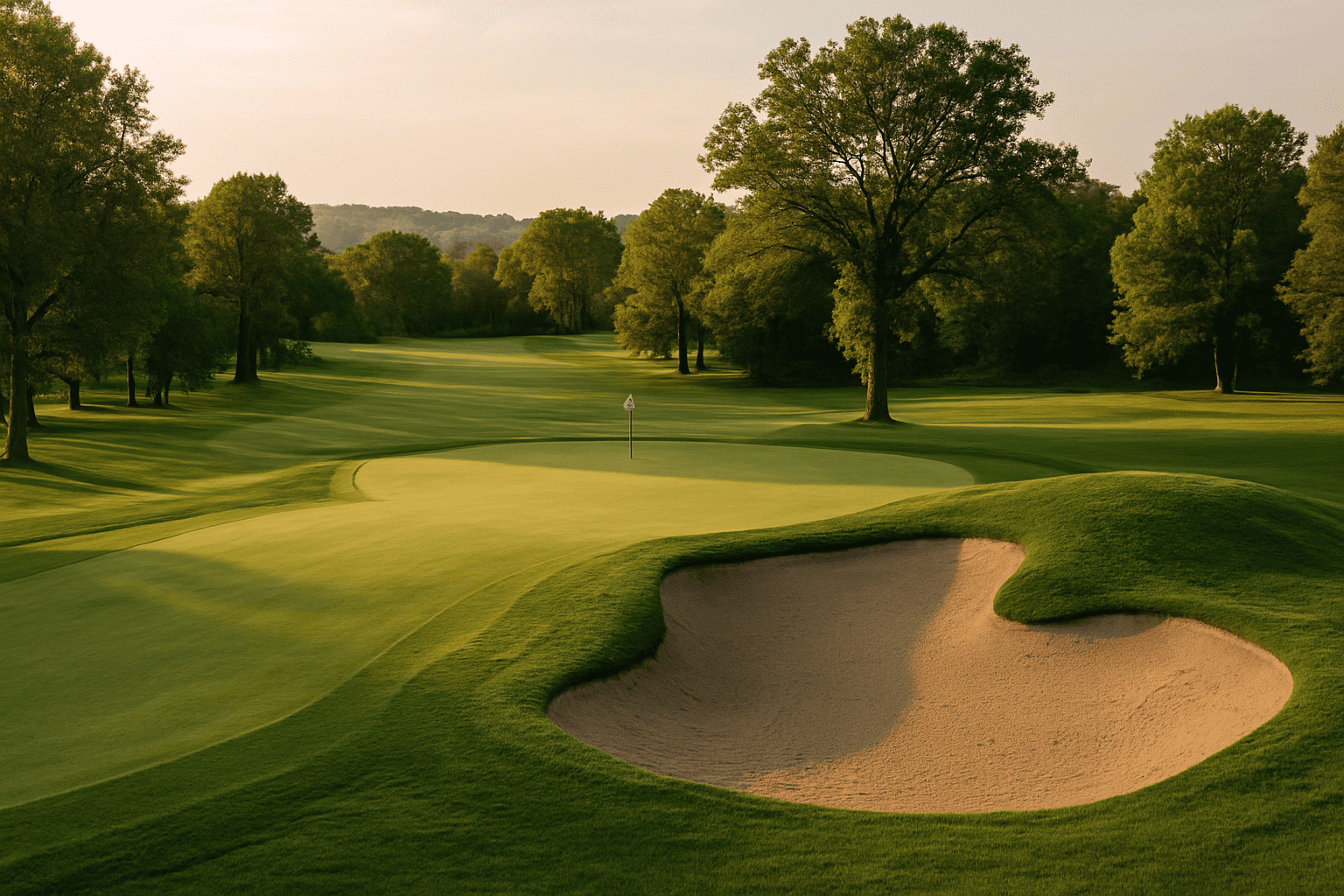A golf course is not just a field with holes. It’s a complex system where every meter is designed with strategy, landscape, perception, and even player psychology in mind. It doesn’t reveal itself immediately but unfolds gradually—with every shot, every route choice. A well-designed course is always slightly provocative—it offers options but never dictates what to do.
Golf course architects are a unique profession. They balance engineering, natural harmony, and gameplay scenarios. Their job isn’t just to place holes—they create playing rhythm, emotional tension, and visual intrigue. The ideal course doesn’t overwhelm but also doesn’t forgive inattention. Like a symphony, it works through accents and pauses, alternating difficulty and relief.
Route planning as narrative: the logic of flow
Every golf course is a spatial story. As a player moves through 18 holes, they live a narrative. Good design begins with the flow logic: how the person moves from start to finish, how varied the holes are, how open spaces alternate with tight corridors. The course should never feel monotonous.
Alternating holes with varying difficulty levels creates natural drama. A tough par-five followed by a short par-three offers recovery. This helps players feel the pace, shifting between strategy and instinct. A designer’s mistake is to make the course either too flat or overly unpredictable.
The placement of features also matters: views of water, tree lines, wind direction. These spatial cues help structure the swing and define scale perception. Experienced architects often work alongside meteorologists and soil experts to achieve optimal surface behavior and ball dynamics.
Landscape and relief: design without decoration
In golf, terrain is not a backdrop—it’s a functional tool. Slopes, terraces, dips, water bodies—all should serve gameplay as well as aesthetics. Good architects don’t fight nature—they collaborate with it. If there’s a natural ravine, it becomes part of play. A slope can serve as a rebound surface.
Modern courses are rarely built from scratch. Most often, an existing plot is adapted for play, preserving the landscape’s character. This requires not just engineering expertise but the ability to “read” the land. Where will the player stand? What will they see first? Where will shadows fall in the afternoon? These questions shape the final layout.
Sometimes artificial features are added—like strategically placed bunkers. They not only add challenge but set a visual rhythm. The shape of the green, fairway edges, sand trap forms—all should serve the goal of engaging, not intimidating, and evoking curiosity.
Player psychology and strategic thinking
A good course doesn’t dictate—it offers choices. It always presents multiple trajectories, and the player decides whether to take risks or play safe. This isn’t just variety—it’s a test of thinking. The course asks, “Are you sure? Do you know what you’re doing?”
Each hole challenges not only technique but mental flexibility. Conditions can shift: wind, light, humidity. The player must adapt, change plans mid-round. That’s why course design allows space for decision-making—not rigid instructions.
- varied approach angles to the green
- options to hit over or around water
Many courses include “mental traps”—places where players overestimate their skills or underestimate terrain. This isn’t trickery—it’s a way to engage critical thinking. Those who play on autopilot fall into these traps quickly.
Balancing play and aesthetics: space as inspiration
A great golf course should not only be engaging to play but also provide aesthetic pleasure. Proportions, lines, colors—all affect perception. A view of a distant slope, the mirror of a pond, the alignment of trees—these are elements of the course’s visual language.
This is why architects often collaborate with landscape designers. Their goal isn’t to create a postcard image but to achieve harmony between gameplay and perception. A well-shaped bunker, for instance, can direct a player’s gaze and help them sense the ideal line.
Special attention is paid to entry and exit points: how a player enters the course and how they leave it. These moments stay in memory. Many architects say, “We don’t build holes—we build memories.” That’s the power of design: to create a course remembered not just for its shots but its atmosphere.
Engineering the invisible: what lies beneath the turf
Beneath a pristine surface lies an elaborate engineering system. Drainage, irrigation, water delivery, soil mix formulas—all determine how the ball rolls, how fast turf dries after rain, how long it stays resilient.
Modern courses are designed for decades of use. They employ geotextiles, drip irrigation, moisture sensors. Architects work with agronomists to ensure turf durability, recovery rates, and root system health.
- heat-resistant grass blends for southern climates
- specialized soils in northern regions for water drainage
Players don’t see this—but they feel it: in the ball’s roll, the bounce response, the pleasant texture underfoot. This is architecture of sensation—invisible, yet defining.
Courses of the future: sustainability, adaptability, technology
The future of golf courses increasingly hinges on sustainability and technology. Many clubs now avoid chemical soil treatments, use recycled water, and install solar panels. This is not just a trend but a necessity for resource conservation.
New designs often include adaptive navigation: digital maps, wind cues, strategy visualization via apps. The course becomes not only physical but also informational. This creates a new level of interaction.
There’s growing interest in compact formats—9-hole courses that are easier to maintain and fit urban contexts. Yet design quality remains high: architects are learning to create intense drama in small spaces.
If you’re interested in how golf intersects with visual and tactile style, check out the article “Course style: how to combine fashion and function in golfwear“. It explores another layer of connection between play and design.
Questions and answers
Because designers build in psychological traps—visual simplicity may mask complex terrain and shot choices.
Yes—rhythm, variety, multiple routes, and balance between gameplay and beauty. Everything else adapts to land and climate.
Yes, with smart use of natural terrain, minimal earthwork, and careful placement of features—good design matters more than cost.

